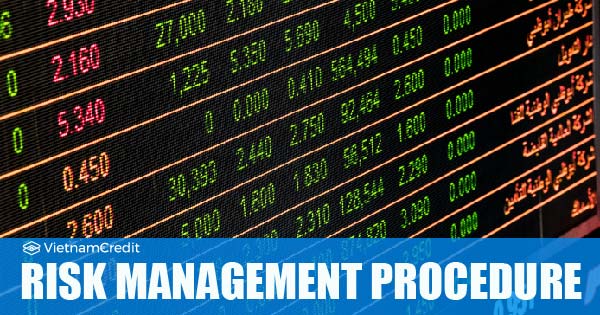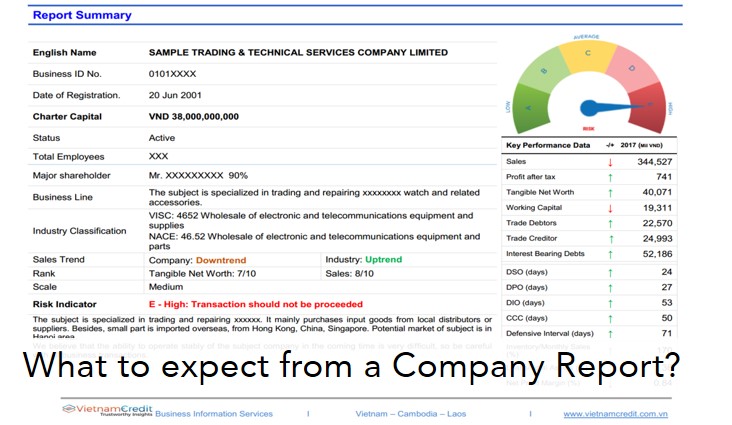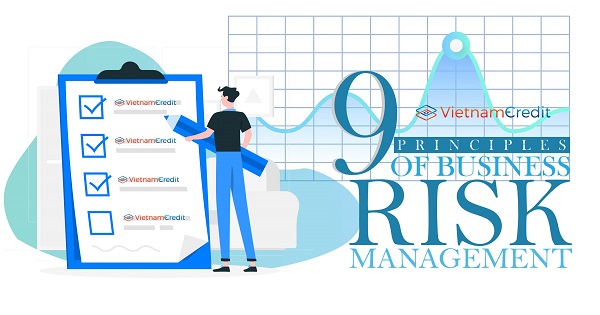Risk management without a proper process is suicidal. Thus Vietnam Credit proposes a risk management procedure, aiding you in managing your potential risks.
What is risk management?
It is the identification, evaluation and prioritization of any risk and uncertainty, followed up by minimizing, monitoring and controlling the effect of risk or improving the opportunity by using coordinated and economical resources.
In fact, risk management is a necessity in any business as it forecasts the returns on investment and the potential damages a company may have to suffer by making new decisions.
In order to be able to identify and assess the risk and the best solutions, there are five steps which the risk management team should follow, including: risk identification, risk analysis, risk evaluation, risk treatment, risk monitoring.
Risk identification
The potential risks of a company includes any event or action that may lead to problems or benefits. Risk identification should start with the determination of the sources of problems and benefits, as well as those of competitors. As risks can be either internal or external, software can be of good use in determining the large variety of risk possibilities. After this process, the team should come up with a list of information, which can be used in risk analysis.
Even though risk identification is usually used at the beginning of risk management, the team should remember that risk identification is continual, as new risks can appear throughout the project as internal and external adjustments are made.
Risk analysis
Once the potential risks have been properly determined, the team may start their thorough analysis on the potential influences that each risk may have on their company, their customers, their implementation of the plans, and their desired results. Risk analysis can a complex task, since you will have to draw on detailed information, including project plans, financial data, security protocols, marketing forecasts, as well as other related information. However, implementing this essential planning tool carefully and the user may save a lot of time, money, and reputations.
Risk evaluation
Now the team can start ranking the probability of the risk’s outcomes, thus helping to draw a picture about the gravity of how a risk may damage a new product or a project. This could be done by comparing the results of the risk analysis with the risk evaluation criteria defined during the context establishment to determine whether the risks are acceptable. The team should also consider whether some risks that we have regarded as separate actually are instances of the same risk and therefore should be aggregated and evaluated as one risk. The team may also identify the magnitude that each risk potentially carries to destroy or support a new tactic, which includes the risk likelihood and its consequence.
Risk treatment
Now that they have had some ideas on the potential risks and their seriousness, they can start taking actions to deal with them properly and orderly, starting with the risks which rank the highest in severity. In order to carry out effective risk treatment, the first thing that needs to be paid attention to is the method which can be used to reduce the probability of a negative risk and to raise the probability of a positive chance. When the team has reached this step of risk assessment, they should prepare some methods or prevention and contingency so that they can limit the chance of having unforeseen factor as they implement their plans.
Moreover, since risk identification is iterative, risk treatment also needs to be iterative; therefore, the team must work continually to come up with solutions to new risks appearing as the project being carried out.
Check out some of our
risk treatment methods
Risk monitoring
Reaching this stage, the team should have all their knowledge regarding the risks, their probability, their consequences and the solutions to them should they happen. This is when they may start monitoring the risks by tracking involving factors which may pose threats to chain reactions. Should the team identify any difference, they should deal with it in a calm manner so as to avoid the widespread ripple effects, which may potential lead to an even bigger risk and would require more complex works to deal with.
Conclusion
Doing business equals facing risks daily, and it would be wise of you to carry out the management process in a proper order, thus reducing the negative effects while increasing the potential benefits.























































